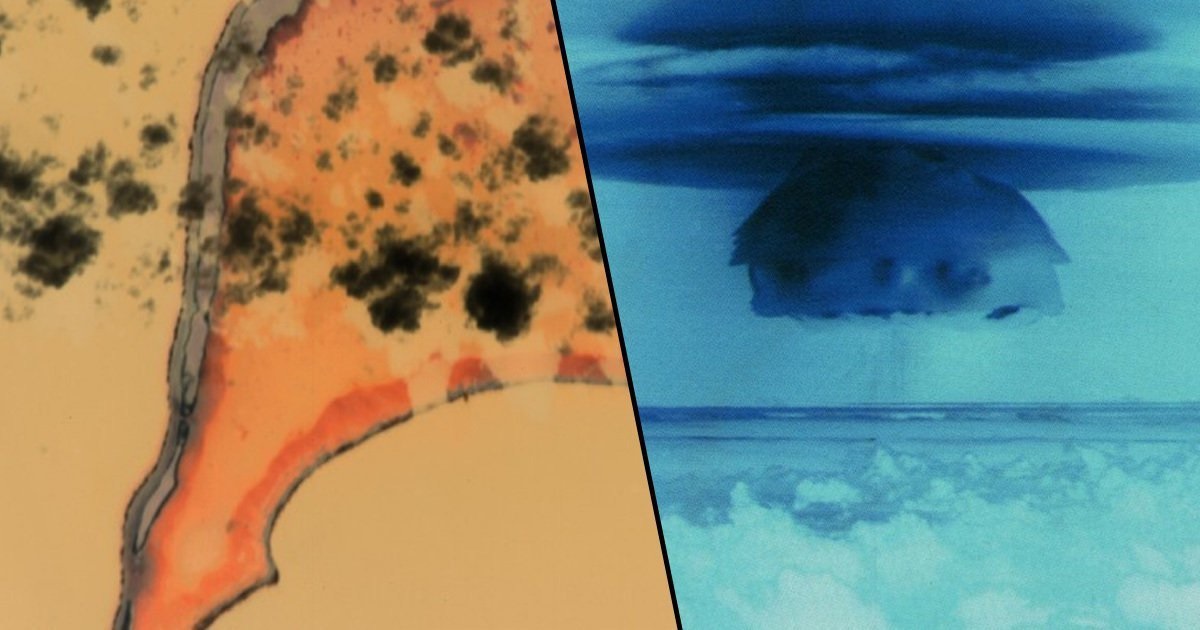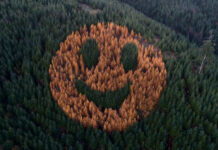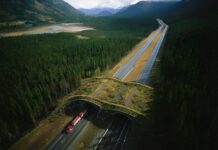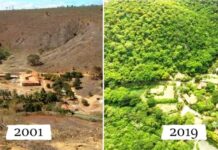In May, we reported that a 18-inch thick 115-metre wide concrete dome-shaped bomb crater — built on the Marshall Islands by the United States to put about 111,000 cubic yards of radioactive waste out of 67 nuclear weapons tests it conducted for 12 years (from 1946 to 1958) during the Cold War — is developing significant cracks, could be leaking toxic nuclear waste into the Pacific Ocean, and could break apart if hit by a tropical storm.
If this piece of information wasn’t alarming enough, a new research carried out by Columbia University has discovered that radioactive waste is leaking into the sea on tropical islands between Australia and Hawaii where radiation is 1000 times higher than toxic sites of stricken nuclear power stations at Chernobyl and Fukushima.
According to the research, levels of nuclear isotopes including plutonium-(239,240), americium-241, and bismuth-207 found on the Bikini and Enewetak Atolls on the Marshall Islands in the central Pacific — a sprawling chain of volcanic islands and coral atolls located halfway between Australia and Hawaii — were many times above the legal exposure limit agreed by the US and Marshall Island governments.

In a peer-reviewed study, researchers found that soil on four isles of the Marshall Islands contains concentrations of nuclear isotopes that greatly exceed those found near the Chernobyl and Fukushima nuclear power plants. Plutonium levels on Bikini Atoll, the site of the world’s largest-ever hydrogen bomb — the most powerful ever detonated by the United States, about 1,000 times bigger than the atomic bomb dropped on Hiroshima —’were up to 15 to 1000 times higher than in samples from areas affected by the Chernobyl and Fukushima disasters‘.

Three of the four islands — Bikini, Enjebi and Runit — are in atolls where nuclear testing took place. But one of the islands, Naen, is in Rongelap Atoll, nearly 100 miles away. However, researchers found concentrations of plutonium-238 on Naen, raising the possibility that the island was used as an unreported dumping ground. The only other place the researchers detected plutonium-238 isotope was at Runit island, where the United States created the dome-shaped bomb crater to dump its nuclear waste.
While the majority of residents were forced to flee their homes on the Marshall Islands during the height of the Cold War, an estimated 70,000 returned. Though the US Government says it was safe for those who wished to return home, locals have already been complaining of birth defects, diabetes, and high cancer rates. News.com.au quoted the researchers as saying:
“The tests caused unprecedented environmental contamination and, for the indigenous peoples of the islands, long-term adverse health effects. The presence of radioactive isotopes on the Runit Island is a real concern, and residents should be warned against any use of the island. Moreover, wash-off of existing isotopes off the islands into the ocean from weathering and continued sea level rise continues to threaten, further contaminating the lagoon and the ocean at large.”
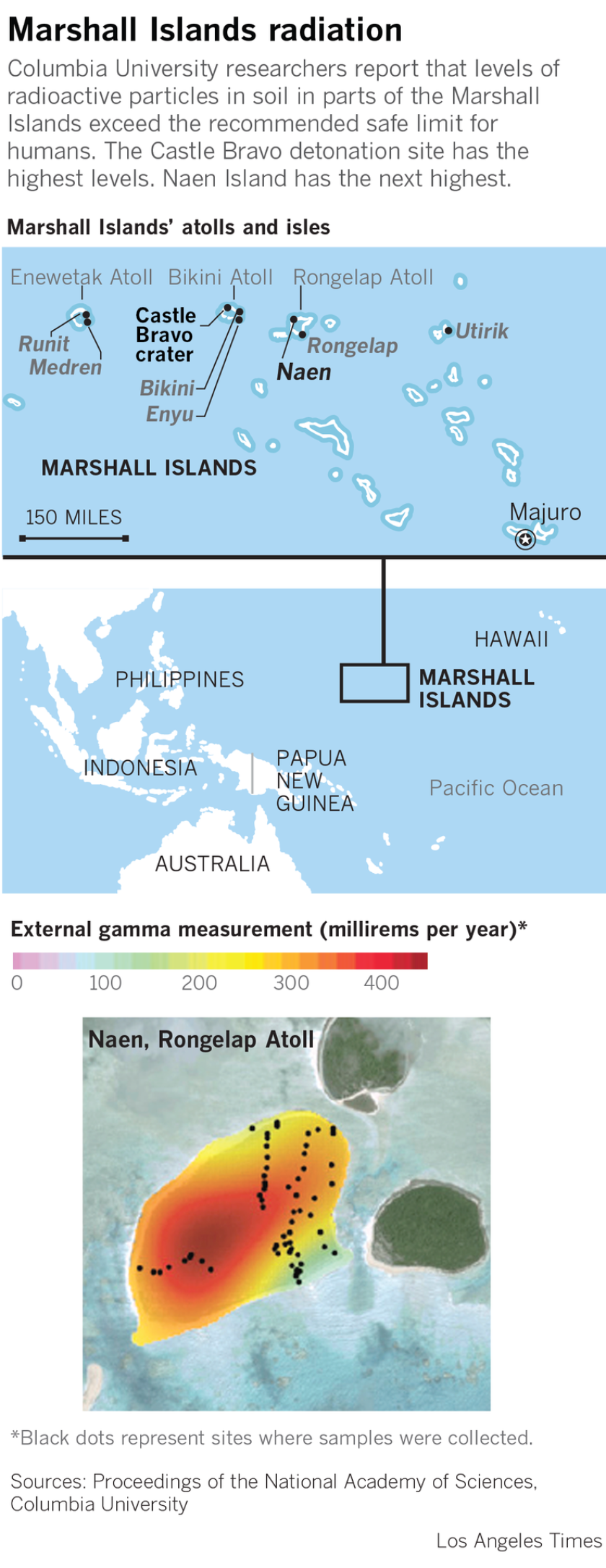
Although Terry Hamilton, the U.S. Department of Energy’s lead researcher on Marshall Island radiation issues, believes the Columbia researchers’ approach seemed reasonable given the costs of pursuing such research in a remote part of the world, he says their methodology and equipment could have overestimated the radiation they were detecting.
But Nikolic Hughes and her husband, Emlyn Hughes, a Columbia University particle physicist and co-director of the K equals 1 project, reject Terry’s claims that their methodology was flawed. The intent of their studies, they said, was to provide the Marshallese with an independent assessment — research not considered suspect because it was conducted by a government responsible for the contamination.
“The work provides valuable background information for local policymakers,” said Jan Beyea, a retired radiation physicist who has worked with the National Academy of Sciences but was not involved with the research. “Implicitly, I think these results might caution efforts to return, because of the readings found.”
HBO’s hit docudrama Chernobyl first showed the world the harrowing effects of radiation poisoning. While thousands living in close proximity to the nuclear plant died agonisingly painful deaths as their blood vessels haemorrhaged and their skin melted from their bodies, hundreds were left with horrific side effects from cancers to miscarriages.
After the Castle Bravo bomb – 1,000 times more powerful than either of the bombs dropped on the Japanese cities of Hiroshima or Nagasaki – was detonated on the morning of March 1, 1954, islanders more than 160 km away mistook fallout for snow. It caused skin burns, hair loss, nausea and eventually cancer in many who were exposed.
